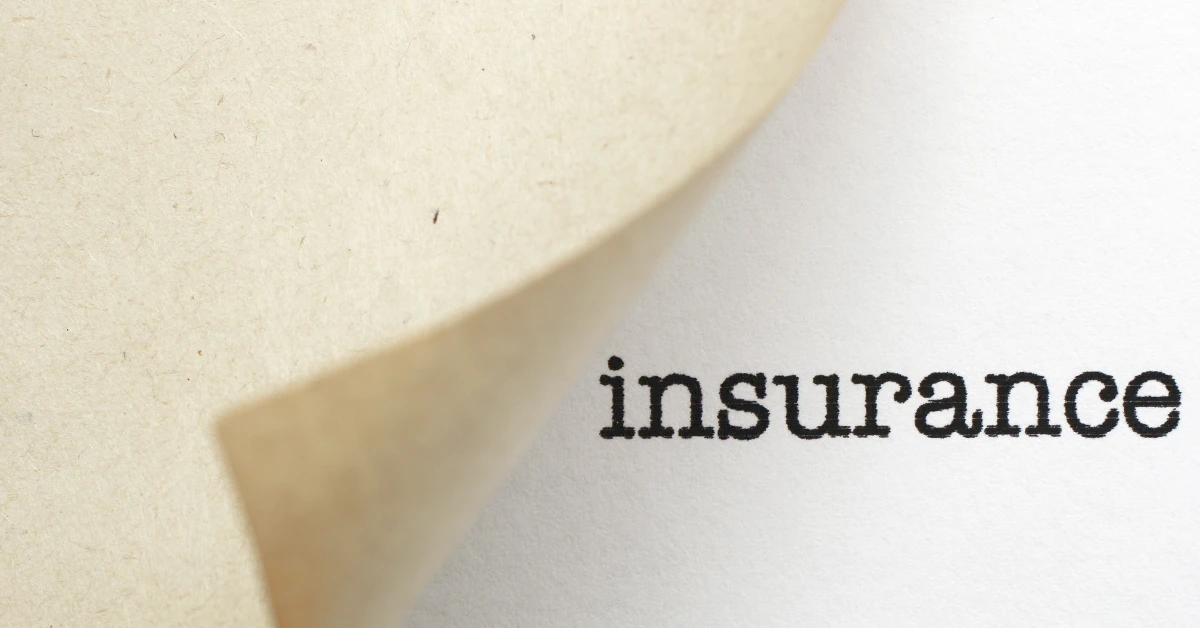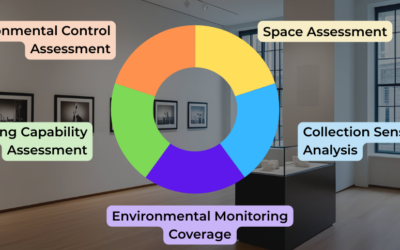It is possible that you may have been working in collections care for a while, and then your first loan happens. This means that you not only need to worry about everyday collections management issues such as documentation, preventive care and conservation, but now you need to think about loans, movement, packing, and of course, art exhibition insurance.
Whether you are organizing, hosting, or lending your pieces to an exhibition, you need to have adequate insurance coverage that meets your specific needs and risks. But how do you choose the right insurance policy for your art exhibition? What are the factors that you should consider before signing a contract? Here are some tips to help you make an informed decision.
Understand the types of art exhibition insurance
There are different types of insurance policies that cover art exhibitions, depending on the nature and scope of the event. It is normal in the museum world to ask for wall-to-wall or nail-to-nail insurance, so make sure you talk to your team and know which one is best for you as each type will come with a different price tag. You might also have other insurance policies that are already in effect with your institution, so it’s a good idea to check what you’ve got to make sure you’re not accidentally paying twice for the same coverage items.
- All-risk insurance: This covers any physical loss or damage to the artworks, unless specifically excluded by the policy. It is the most comprehensive and expensive type of insurance, and it usually requires a detailed inventory and valuation of the artworks.
- Named-perils insurance: This covers only specific causes of loss or damage, such as fire, theft, vandalism, water damage, etc. It is less expensive than all-risk insurance, but it also offers less protection. Make sure that the policy covers all the potential risks that your exhibition may face.
- Wall-to-wall insurance: This covers the artworks from the moment they leave their original location until they return to it, including transit, storage, installation, and de-installation. It is ideal for traveling exhibitions or loans from other institutions.
- Nail-to-nail insurance: This covers the artworks only while they are on display at the exhibition venue. It does not cover transit, storage, or installation. It is suitable for exhibitions that use artworks from the same location or that have separate transit insurance.
Understand the terms and conditions of the policy
Before you agree to a brand-new insurance policy, you need to read and understand its terms and conditions carefully. As you have probably bought insurance before for your car or your home, you are probably aware of many of these:
- Deductible: This is the amount that you will have to pay out of pocket before the insurance company pays for a claim. The higher the deductible, the lower the premium, but also the more financial risk you take on.
- Limit of liability: This is the maximum amount that the insurance company will pay for a claim. It can be per occurrence, per item, or per exhibition. You need to make sure that the limit of liability matches or exceeds the value of your artworks.
- Exclusions: These are the situations or events that are not covered by the policy. For example, some policies may exclude war, terrorism, natural disasters, wear and tear, inherent vice, etc. You need to be aware of what is not covered and consider additional coverage if needed. Be particularly careful in the event that your insurance will not cover inherent vice or natural disasters, as your environmental monitoring system will be key to saving you from potential nightmares.
- Subrogation: This is the right of the insurance company to recover its losses from a third party that is responsible for causing them. For example, if your artworks are damaged by a faulty sprinkler system at the exhibition venue, the insurance company may sue the venue owner to recover its payment to you. This may affect your relationship with the venue owner or other parties involved in the exhibition, so you might want to ask for a waiver of subrogation to avoid this.
Here’s a little insurance handbook by DeWitt Stern that was prepared for the New England Museum Association Annual Conference in 2009 that you can check out.
Compare different quotes and options
Before you choose an insurance policy for your art exhibition, you should shop around and compare different quotes and options from various providers. You can use online platforms, brokers, or agents to help you find the best deal for your needs. Don’t forget to go to your local, regional or national professional groups and associations and ask your colleagues for recommendations. For example, here are some regional recommendations for Canada from the British Columbia Museums Association (BCMA). Some of the factors that you should compare are:
- Premium: This is the amount that you have to pay for the policy, either monthly, quarterly, or annually. The premium depends on various factors, such as the type of coverage, the value of the artworks, the duration of the exhibition, the location of the venue, etc.
- Coverage: This is the extent and scope of protection that the policy offers. You should compare not only what is covered but also what is not covered by different policies. You should also check if there are any special conditions or requirements for certain types of artworks or exhibitions. Conditions may be related to environmental monitoring, courier staff, distances, and time period.
- Service: This is the quality and reliability of the provider’s customer service and claims handling. You should look for reviews and testimonials from other customers who have used their services before. You should also check how easy it is to contact them, file a claim, or get assistance in case of an emergency.
Review your policy periodically
Once you have chosen an insurance policy for your art exhibition, you should not just forget about it until something happens. You should review your policy periodically and update it if necessary. The last thing you need is to pull up your policy because you need it and realize something very important either does not apply anymore or, worse, should have been added before today because now you’re in trouble. Some of the situations that may require a policy review are:
- Changes in value: If your artworks appreciate or depreciate in value over time, you should adjust your limit of liability accordingly. You may need to get new appraisals or valuations for your artworks and submit them to your provider. While it may not be practicable or affordable to do this to every single object in your collection, make sure you know which objects should definitely be appraised on a regular basis – especially the ones that increase their value over time.
- Changes in location: If your exhibition moves to a different venue or country, you should notify your provider and check if your policy is still valid and adequate. You may need to get additional coverage or endorsements for different risks or regulations. Be aware that due to the increase in natural disasters in certain areas, such as Florida, Louisiana, and California, some insurance companies have moved out altogether. If you suddenly find yourself uninsured or uninsurable, you will need to consider taking special measures to reduce your particular risks.
- Changes in duration: If your exhibition is extended or shortened, you should inform your provider and adjust your premium and coverage accordingly. You may be eligible for a refund or a credit if you cancel or reduce your policy before its expiration date.
Follow preventive care practices for collections care
Of course, having insurance for your art exhibition does not mean that you can neglect the care and preservation of your collections. You should still follow preventive care practices for collections care as best you can, as recommended by reputable resources and organizations in heritage conservation, such as the American Institute for Conservation (AIC), the International Council of Museums (ICOM), or the Canadian Conservation Institute (CCI). Some of the best practices that you should follow are:
- Condition reports: Document the condition of your artworks before, during, and after the exhibition, using standardized forms and methods. You should also take photographs and videos of your artworks as evidence of their condition. This documentation will prove essential for any potential insurance claims.
- Packing and handling: Use appropriate materials and techniques to pack and handle your artworks, following the guidelines and instructions provided by your provider, lender, or conservator. You should also label and secure your packages properly and avoid any unnecessary movement or manipulation of your artworks.
- Environmental control: Monitor and control the temperature, humidity, light, and air quality of the exhibition venue, using suitable equipment and devices. Perhaps you would also like to consider monitoring some conditions inside a crate while the object is in transport or transit. You should avoid any sources of heat, moisture, dust, or pollution that may harm your artworks. Don’t forget to add to the agreement environmental requirements for sensitive materials that need specific environmental parameters during the period of the loan. And last but not least, don’t forget to take into account sustainability and responsible energy use.
- Security and safety: Protect your artworks from theft, vandalism, fire, water damage, or other hazards, using adequate security and safety measures. You should also have an updated emergency plan and a disaster recovery plan in case something goes wrong. Make sure you have a ready list and previous relationship with emergency vendors, suppliers and allies you can call in the event of an emergency.
- Facilities report: In the first stages of the loan negotiation, ask for a facilities report of the borrower’s institution. If you are the borrower, be aware that the lending institution might ask you to provide this information. A facilities report is used to record the most up-to-date physical specifications and staff practices, collating key collection care information related to the building, exhibition area, access, handling, and environmental conditions. This document can help you identify potential issues and arrange for possible solutions. It will also give you more clues about what type of policy the loan needs and what needs to be covered.
We hope the tips above will help you to either start thinking about art exhibition insurance policies or improve the one you already have. Most importantly, don’t forget that your colleague’s past experiences as well as their lessons learned from previous mistakes will be an invaluable font of information for you so never be afraid to ask them about topics you are unsure about. We hope you leverage the free Conserv Community where registrars, conservators, archivists, and heritage professionals from around the world will be happy to chat with you about your concerns.
If you have any questions about environmental monitoring, integrated pest management, or just want to talk about preventative conservation, please reach out to us! Don’t forget to check out our blog or join our community of collections care professionals where you can discuss hot topics, connect with your peers or even take a course to get familiar with the Conserv platform.




